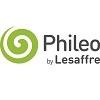
All together to support swine production: What solutions are available to substitute zinc oxide?
All tools that can help replace pharmaceutical level ZnO are very appreciated. However, I have not seen one single additive that, in such consistent way as ZnO, can reduce weaning diarrhea and improve piglet performance.
I would appreciate if you could elaborate graph 2: It seems as if diarrhea is emerging 18-19 days post-weaning in that trial. Usually, “classical” weaning diarrhoea starts 4-5 days post-weaning so the picture depicted in graph 2 is unusual and deserves an explanation. I also wonder how many replicates per treatment group that were used in that trial?
Do you have any experience combining Actisaf with various acids e.g. butyric acid, benzoic acid, formiates et cetera?
July 25, 2018
Dear Mr Steffen Hansen,
Thank you for your interest.
It is indeed challenging to replace ZnO by 1 feed additive, since they do not have the same mode of action. It is our approach to reduce the use of the Zinc oxide gradually at farm level with a complete farm approach including Actisaf®. My field experience allow me to say that this protocol works. We follow the farmers in a progressive or total reduction of the Zinc oxide while giving them recommendations of management; all this approach done to maximize the chances of success.
I complete my approach by this recommendation : the transition is always better when the sows have previously received Actisaf® .
Currently, a lot of acids are used in the field .The compatibility rules with acids are complex as some acids (or combination of acids) can be harmful for yeast probiotics whom must stay alive. Depending on the situation, we have to adapt recommendations and application procedures.
In case of any additional questions (more details on the protocol or acid compatibility), please do not hesitate to send me an email (g.kuhn@phileo.lesaffre.com) .
I remain at your disposal
Géraldine KUHN
Europe & CIS swine Manager
Thanks to you all who commented on swine problems that gave me sleepless nights. The info has been used to the best of my understanding and the results are really promising.
Effective reductions of zinc oxides in pre weaning and post weaning is to balance our ecosystems.





